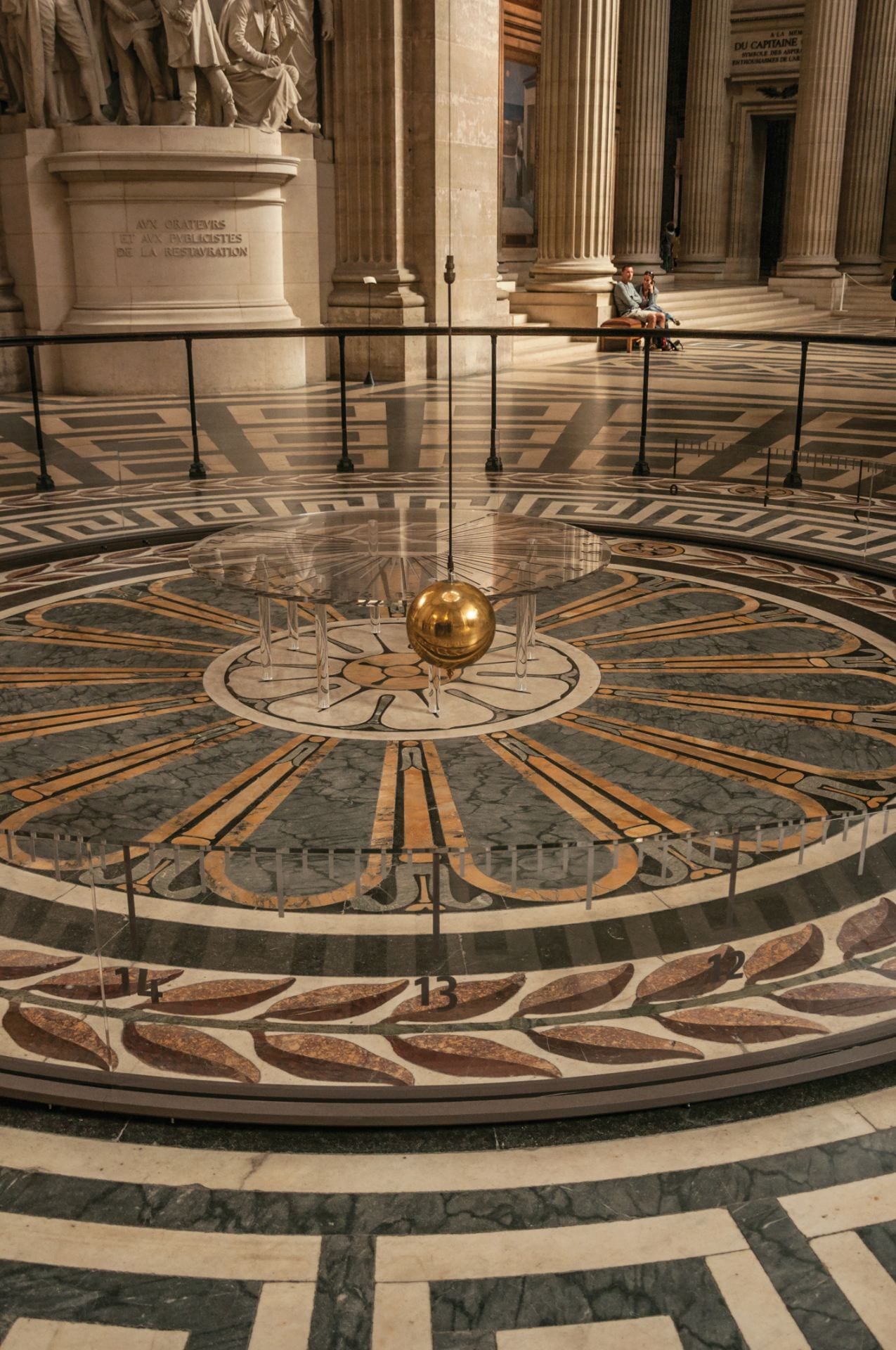Foucault's pendulum goes quantum
An expert in quantum mechanics and photonics, Assoc Prof David Wilkowski is making quantum computing and simulation more robust.

Figure 1: Foucault’s pendulum at the Panthéon in Paris, France.
A staple exhibit of science centres worldwide, Foucault’s pendulum helps us visualise the usually imperceptible rotation of the Earth. In the experiment, a free-swinging pendulum appears to gradually change its direction over the course of the day. For example, in the model, a pendulum suspended at the North Pole will continue swinging on its original path while the Earth below it rotates, making it appear that the pendulum’s path is rotating (Figure 1).
Studying Foucault’s pendulum in the quantum world
My research team has realised a quantum version of Foucault’s pendulum, opening the door to the simulation of fundamental phenomena in quantum physics. In the quantum world, elementary particles and atoms have intrinsic rotational movement—their spin. Like the path of a pendulum, the spin of a particle can be controlled by geometrical means.
Working with a cloud of some 10,000 strontium atoms (87Sr), we tested if the orientation of the strontium atoms’ spin could be altered with the help of laser beams. Laser light shone onto the atoms acts like the Earth’s rotation on Foucault’s pendulum, causing the spins to change their orientation.
We found that not only did the strontium atoms change their spins in response to the lasers, but their behaviour was non-Abelian, meaning that the way laser beams transform the atoms’ spins not only depends on the chosen set of laser operations but also on the system’s starting point.
Put in context of the classical world, this observation is akin to finding that the rotation of a Foucault’s pendulum behaves differently depending on the time of day measurements are started. As the observed phenomenon has no counterpart in the classical world, our lab observations reflect a genuine quantum effect.
Rotating the spin of ultracold strontium atoms
In our set-up, the strontium atoms are first cooled to a temperature about one millionth of a degree above absolute zero (0 Kelvin, or about -273oC). We then turned on a trio of lasers that interacts with some of the atoms’ internal energy states. With atoms arranged such that they behave as if each only has two quantum states, the system is equivalent to an ensemble of spin-1/2 particles for which rotation of the spin can be changed without any energy cost (Figure 2).

Figure 2: Cold atoms in a laboratory could help tackle unanswered questions in fundamental physics. The blue lasers in this image are cooling a cloud of strontium atoms (centre). Credit: Alessandro Landra.
Monitoring the spins as they change with the phase of the lasers, our experiments confirmed that the transformations had non-Abelian character. With this “geometrical” control of the atomic spin orientation, many fascinating experiments and applications are becoming possible.
In particular, the approach offers a way to simulate gauge field structures such as 2D spin-orbit coupling, relativistic trembling motion (“Zitterbewegung”, a rapid motion of elementary particles such as electrons) and magnetic monopoles. To observe these phenomena, the strontium gas needs to be cooled further to bring the temperature to around one ten-millionth of a degree Celsius above absolute zero, a goal that the team is currently working towards.
The future of quantum computing?
Control of the spin orientation is one of the fundamental building blocks of quantum computers that researchers and engineers around the world are trying to develop. An interesting aspect of the geometrical transformation is that the spin orientation is settled after a complete loop in the parameter space, corresponding to a 24-hour rotation in the case of the Foucault pendulum. Thus, the spin orientation depends on the exact topology of the space but not on slight local modifications of the environment, which makes the transformation more robust and less prone to errors than the usual “non-geometrical” methods of spin manipulation.
Using ultracold strontium atoms could allow quantum computing based on individual atoms or pairs of atoms, compared to approaches using ensembles of many atoms. We are currently investigating several options to achieve this task.
Author: David Wilkowski
Assoc Prof David Wilkowski of NTU’s School of Physical and Mathematical Sciences is Associate Director Innovation & Industry Relations at IRL MajuLab, a partnership between the French National Centre for Scientific Research (CNRS), the University of Nice Sophia Antipolis, Sorbonne University, NTU and the National University of Singapore (NUS). He is also a principal investigator at NTU’s Centre for Disruptive Photonic Technologies, and holds a joint appointment with the Centre for Quantum Technologies at NUS. The research discussed in this article was published in Nature Communications (2018), DOI: 10.1038/s41467-018-05865-3.


.tmb-listing.jpg?Culture=en&sfvrsn=370a7c71_1)

.tmb-listing.jpg?Culture=en&sfvrsn=ab6472c8_1)

.tmb-listing.jpg?Culture=en&sfvrsn=8fcd2938_1)
.tmb-listing.jpg?Culture=en&sfvrsn=7a33f2b7_1)